NDFU union farmer

SEPTEMBER 2023 • ndfu.org



SEPTEMBER 2023 • ndfu.org

With farmers in the middle of harvest, Congress set to pass Farm Bill extension
I grew up on a ranch in central North Dakota near the town of Center, where we predominantly raise beef cattle and farm for feed. I have two older brothers that are still on the ranch working with my dad. I got married to my wife, Keylee, in August of 2020. We just had our first baby girl (Maren) on Apri 27 and she is an absolute blessing! We moved to Turtle Lake in 2020 when I started as an agent for Farmers Union Insurance. We have planted our roots in Turtle Lake and McClusky where I look forward to serving the community for many years to come.


The thing I love most about the job is being able to help my customers understand a very complex industry. Things are always changing, and it is nice to be that level of support for my clients and to advocate for them in times of need. It is great to be able to communicate with these wonderful people each day.
I am a football coach for the Central McLean Cougars. I also serve on the Turtle Lake Chamber of Progress, McClusky Merchants, Turtle Lake Community Center board and various volunteering opportunities around the community.


President: Mark Watne

Vice President: Bob Kuylen
Treasurer: Ronda Throener Bob Finken; Jon Iverson; Shane Sickler; Tyler Stafslien; Michelle Ziesch.
Secretary: Wes Niederman
North Dakota Farmers Union’s highest priority at this moment is the next farm bill, which expires Sept. 30. Work on the farm bill likely will not be completed by then, so an extension of the existing bill will be needed before a new farm bill can be crafted by the end of the year or early next year.
Our objective for farm policy is to ensure family farmers and ranchers can secure net farm income equivalent to families in other sectors of our national economy. The policy should provide price protection, risk management, competition in the marketplace, stock control mechanisms to avoid stocks being pushed into the market when prices are at their lowest, and target family farmers and ranchers.
The farm bill is an omnibus, multiyear law that governs agricultural and food programs. It provides an opportunity for policymakers to address agricultural and food issues comprehensively and periodically. In addition to developing and enacting farm legislation, Congress is involved in overseeing its implementation and the United States Department of Agriculture carries out the legislatively directed programs. The farm bill is usually renewed every five years. Typically, it is nonpartisan with support from both sides of the aisle, both rural and urban legislators, and the executive branch.
The cost or farm bill scoring baseline that is used to determine dollars available for the next 10 years is $1.51 trillion. Food and nutrition (SNAP) programs comprise 81.1% of this expenditure. The farm bill also includes dollars for energy, research, horticulture, trade, inflation reduction, conservation, commodity programs, crop insurance and several miscellaneous programs for rural America. Commodity programs and crop insurance comprise about 11.2% (only .23% of total federal spending) of farm bill funding. This is an excellent investment for taxpayers to maintain the inexpensive and abundant food supply system we all enjoy in this country.
The farm bill can create coalitions of support among many interests that individually might have greater difficulty achieving majority
support in the legislative process. In recent years, more stakeholders have become involved in the debate, including national farm groups, commodity associations, state organizations, nutrition and public health officials, and advocacy groups representing conservation, recreation, rural development, faith-based interests, local food systems, and organic production. These factors can contribute to increased interest in the allocation of funds provided in a farm bill.
NDFU is prioritizing these items:
• Maintaining and enhancing crop insurance and livestock coverage programs.


• Raising PLC reference prices and ARC payment calculation prices. We would like to see a dual sign-in option for ARC and PLC with the farmer receiving the higher of the two programs that generates the most income for their farm.
• Better controls on payment limits and more targeting of payments to real family farms and ranches.
• Support for a permanent disaster program to eliminate the need for ad hoc disaster programs that can be unfair and expensive.

• Support for conservation programs and carbon sequestration programs that reward farmers for environmental practices.
• Enactment of a competition title focused on antitrust laws and monopolistic practices that are impacting farm and ranch income, due to fewer companies owning a large percentage of the market in meatpacking, seed, chemical, fertilizer, transportation and other sectors.
NDFU is participating in a fly-in to Washington, D.C., this September to voice our ideas and concerns. I ask all of you to be prepared to participate in the farm bill dialogue. With your help, we hope to continue to have a strong farm bill that supports farmers and consumers.













Members can use the same email address and password they use for the NDFU portal to log into the app. If you do not know your password, use the “Forgot Your Password” option. NDFU must have an email address on file for you to use the app. If we do not have an email address for you, please call 1-800-366-6338 or email us at ndfu@ndfu.org to have it attached to your account. 1 2 3



Login with your email address and password. Use the email address where you receive your NDFU communications.
If you don’t know your portal password, use the Forgot Your Password option!
Follow the on-screen prompts to login. NDFU utilizes two-factor authentication for security purposes.

Choose to receive your two-factor code via text or email!
Enter the code to get into the app. If the texting option does not work the first time, try again and choose the email option.
You will stay logged into the NDFU app continually, providing you open the app once a month!
Three of the features of the app include a home screen with notifications, state convention registration and the ability to find and contact your legislators about important issues!


Do I have to be a member to log into the mobile app?

Yes. The app is for NDFU members. Those who would like to become members can sign up at NDFU.org!
What if NDFU doesn’t have my email address?
Like any online service, we require an email address to use the mobile app. Contact us at 1-800-366-6338 or ndfu@ndfu.org to have an email address added to your account. Additionally, if we have a different email address on file than the one you’re currently using, you can use the one we have on file or contact us with your new address.
NDFU has my email, but I’ve never used the online portal. What’s my password?
Simply use the Forgot Password link on the login screen and follow the on-screen prompts to set a new password!
What should I do if I have additional problems?
If you continue to have trouble logging in, please contact Chris in the Communications Department at 701-952-0118 or caarhus@ndfu.org.

NDFU’s Women in Leadership Development (WILD) program will launch Empower You! on Sept. 30, an inspiring journey to harness and activate emerging leadership qualities in women. Heather McDougall, a national speaker, entrepreneur and filmmaker, will be facilitating the yearlong program.

“We’re so excited to make this investment in women,” said Jane Opdahl, WILD program leader. “Heather has helped us design a great program that gives women the tools to set and achieve goals through community and comradery.”
It’s that sense of comradery “where the magic happens,” notes McDougall. “Your vision is uniquely yours. Our goal is to tap into every participant’s zone of genius and have them experience the power of a dream come alive when backed by a room full of empowered women leaders.”
The program consists of the kickoff session on Sept. 30 in Nome at the Nome Schoolhouse, a series of six Zoom sessions and fun “meetup” group events that will be held in various locations throughout the year. A private Facebook group for participants will also be established for cheering and ongoing communication.
Zoom session topics include:
• Activate Your Vision
• Moving Through Barriers – Mind, Body, Action
• First, Next, Celebrate – Finding Momentum
• Vocal Breakthrough – How to Unlock Your Uniqueness
• Growth & Audience Activation – Marketing Foundations
• Funding Your Dream
The site for the kickoff event is the historic schoolhouse in Nome. The venue has a story of its own, taking root in 2018 when two remarkable women set out to restore the building to its former glory in the form of a fiber arts retreat center, event center and boutique hotel. Cost of the event is $30.
Registration opens at 11 a.m. with coffee, mimosas and shopping vendors. After lunch, participants will be inspired by McDougall’s keynote address and women panelists (Carly Rott, Abbey Quandt and Barb Thoreson), who will share their background and passion for agriculture and rural communities. Tours of the Dakota Fiber Mill, Bear Creek Felting and Shepherd Industries Store will also be held to close out the day.
To register for the kickoff event, go to WILDEmpowerYou.eventbrite. com. The first 20 women who sign up to participate in the Zoom sessions will receive a free WILD wellbeing kit by mail. Anyone unable to make the kickoff event can still participate in the Zoom sessions and group meet-ups by contacting Jane Opdahl at jopdahl@ndfu.org.
— Pam Musland, NDFU




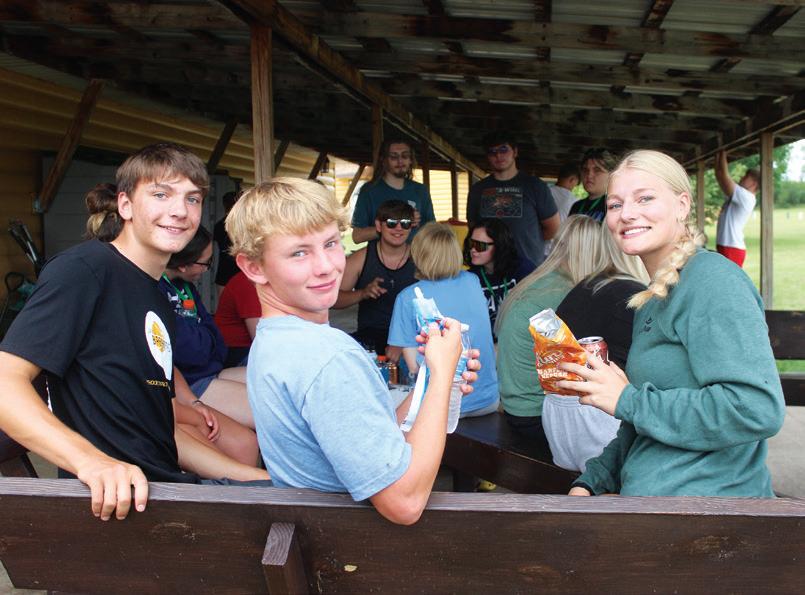


Camp season has concluded for 2023! Thank you to all of our campers, their families and our wonderful counselors for another great summer!


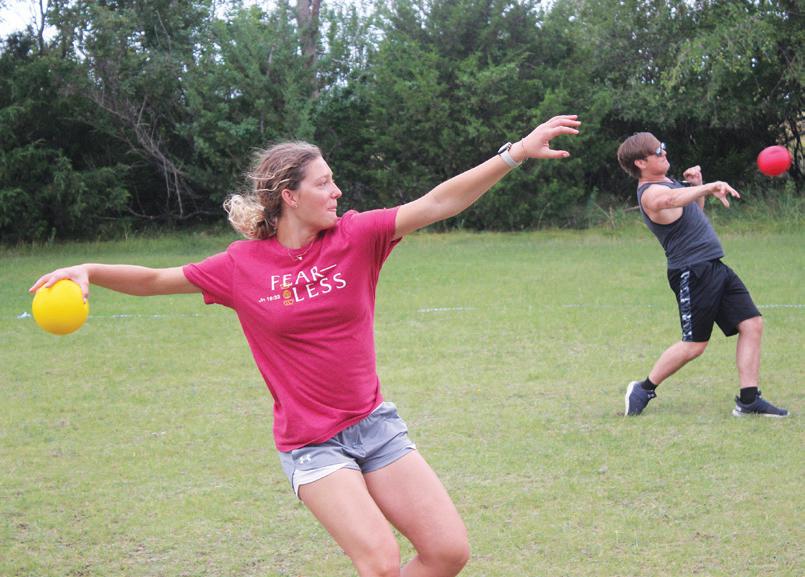
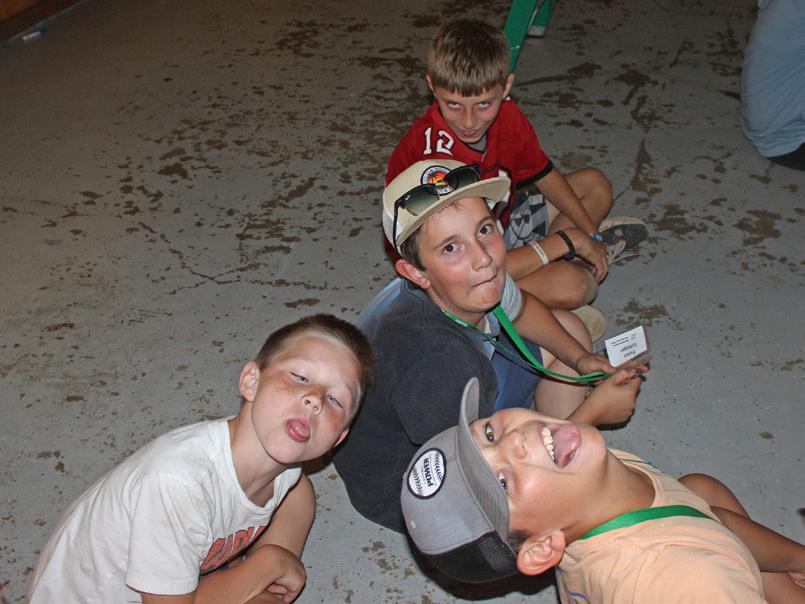


In late July, House Republican leaders ditched their plans to bring the Fiscal Year 24 Agriculture, Rural Development, Food and Drug Administration (Ag-FDA) bill to the floor. The lone FY24 spending bill the House was able to pass is the Military Construction, Veterans Affairs bill.
The Ag-FDA bill is usually one of the most bipartisan and least controversial funding measures.
The current hold-up is largely the result of internal division within the GOP majority concerning total spending levels for FY24 and the inclusion of poison pill policy riders.
The FY24 Ag-FDA bill provides USDA, FDA, and the Commodity Futures Trading Commission (CFTC) a total of $25.3 billion in appropriations, which marks a roughly 2% cut from FY23 levels. But according to various reports, members of the House Freedom Caucus have been demanding even greater cuts that would be deeper than the recissions that were agreed to as part of the debt-ceiling negotiations back in May.
NFU made clear its opposition to the House Ag-FDA funding bill upon the bill’s release in May. In addition to proposing major discretionary funding cuts, it includes numerous harmful provisions, including preventing USDA from completing its rulemakings to strengthen the Packers and Stockyards Act (P&S Act), cutting the program that supports distressed borrowers of FSA loans, and rolling back funding for key climate change and nutrition programs.
The Senate version, which advanced out of committee unanimously, does not contain the harmful P&S Act rider, and funds programs that hew to the debt-ceiling deal spending targets. NFU remains committed to ensuring the harmful P&S Act rider is not included in the Ag-FDA funding bill when it reaches the conference phase.

On July 19, during a meeting of the White
House competition council, USDA Secretary Tom Vilsack announced a new partnership with 31 state attorneys general “to enhance competition and protect consumers in food and agricultural markets, including in grocery, meat and poultry processing, and other markets.” This new initiative furthers the goals in President Joe Biden’s Executive Order on Promoting Competition in the American Economy, building on the “whole of government” approach.
The Agricultural Competition Partnership aims to assist state attorneys general in tackling anticompetitive market structures in the agricultural supply chain that are causing increased costs and reduced choices for consumers and producers. For years, state attorneys general have been requesting support from USDA and other federal agencies on agricultural competition matters. The new partnership reflects USDA prioritizing an area in which there is a significant need for action.
The focus areas of the Agricultural Competition Partnership include:
• Anticompetitive market structures and practices, as well as price gouging and other anti-consumer practices, in food, retail, meat and poultry processing, and other agriculture industries.
• Lack of choices for consumers and producers.
• Conflicts of interest, misuse of intellectual property, and anticompetitive barriers across the food and agriculture supply chains, such as in seed markets.
According to USDA, the new partnership “will enhance the capacity of state attorneys general to conduct on-the-ground assessments of competition and consumer issues, enhance coordination between federal and state agriculture and competition authorities, create new and more independent research programs, and ultimately result in fairer and competitive markets and more resilient supply chains.”
Prior to this announcement, NFU President Rob Larew participated in a listening session hosted by the White House and USDA to
Farmers Union members will hear from U.S. Department of Agriculture officials about initiatives the department is undertaking on behalf of farmers. They expect to meet with USDA officials about their important work on competition and resiliency in the food system. Participants will also receive briefings from key Congressional leaders, especially related to the 2023 Farm Bill.
discuss legislative priorities on competition for food and agriculture. NFU intends to continue working with the White House and USDA to strengthen and diversify supply chains and protect family farmers and ranchers from anticompetitive conduct.

On July 27, NFU endorsed and cheered the introduction of the Fairness for SmallScale Farmers and Ranchers Act of 2023. The legislation, introduced by Reps. Greg Casar (D-TX) and Earl Blumenauer (D-OR) and Sen. Peter Welch (D-VT) aims to address corporate consolidation in the U.S. food system head-on.
Major provisions provide some of the strongest legislative and regulatory actions to increase competition throughout the agricultural supply chain, penalize anticompetitive conduct in livestock and poultry markets, and provide investments to strengthen supply chain infrastructure. The bill also strengthens the P&S Act and reinstates mandatory country-of-origin labeling (COOL) for beef, pork, and dairy products.
Specifically, the Fairness for Small-Scale Farmers and Ranchers Act:
• Institutes a moratorium on large agriculture, food and beverage manufacturing, and grocery retail mergers.
• Requires federal antitrust retroactive
reviews of large agriculture and food-related mergers.
• Expands the Local Agriculture Market Program (LAMP).
• Restores mandatory COOL for beef, pork and dairy.
• Strengthens the P&S Act and P&S Act rulemaking authority.
• Provides additional resources for the Farming Opportunities Training and Outreach (FOTO) program to better support beginning, veteran, and socially disadvantaged farmers and ranchers.
Reps. Casar, Blumenauer, and Sen. Welch held a press conference introducing the legislation. Layla Soberanis, NFU’s senior government relations representative, spoke at the press conference, praising the provisions that direct new scrutiny of large mergers, address the rampant consolidation throughout the agriculture industry, as well as the need for stronger antitrust laws and efforts to help protect family farmers and ranchers from corporate abuses – encapsulating Fairness for Farmers.
NFU’s top priority in the months ahead is ensuring passage of a strong farm bill and establishing a dedicated title within the farm bill on competition. This legislation provides a blueprint for the contents and language of a competition title in the 2023 Farm Bill.
The 2018 Farm Bill expires on Sept. 30. It is now abundantly clear that Congress will have to extend the current farm bill before passing a new one. With slow progress to date, stakeholders have little clarity on what will be in the farm bill and when or how it will get done. Instead, we are left with questions – questions that Congress will have to answer in the weeks and months ahead.

Farm Bill extensions are nothing new. The 2018, 2014 and 2008 farm bills were all passed after extensions, and the 2002 Farm Bill was passed weeks after the preceding legislation expired. An extension isn’t reason enough to doubt the future of the farm bill, but the 2023 Farm Bill is facing some unique headwinds.

Many viewed the House agriculture appropriations bill as a litmus test for the 2023 Farm Bill debate. If that process is any
indication, the farm bill is headed for a long, bumpy ride. The House planned to move its agriculture funding bill at the end of July, but those plans fell apart. Congress ended up adjourning for August recess having passed only one of its 12 appropriations bills. That leaves policymakers just 12 working days to avert a government shutdown. The appropriations battle will slow progress on the farm bill, and a shutdown would stall the process further.
If Congress does not finish its appropriations work quickly, the farm bill debate could very well spill into 2024. At that point, Congress will be under heightened pressure to wrap up its work before the election cycle grinds the legislative process to a halt. Senate Agriculture Committee Chairwoman Debbie Stabenow (D-Mich.) also brings her own sense of urgency to the farm bill debate. With her plans to retire at the end of 2024, completing another farm bill is important to cementing her legacy.
Market and weather volatility over the last five years have exposed the inadequacy of the farm bill safety net. Since 2019, farm bill programs have accounted for just 27% of the farm safety net. Instead, farmers and ranchers have been forced to rely on ad hoc programs to weather trade wars, the COVID pandemic and a host of natural disasters. Each of those emergency programs was needed because farm bill programs simply weren’t enough to keep farmers afloat. As a result, many commodity groups and farm organizations, including NDFU, are advocating for stronger farm bill safety net programs.
Congress has two paths to funding safety net improvements. The first is to secure “new” funding – funding in addition to the bill’s $1.5 trillion baseline. After the recent debt limit battle, it is unlikely that Congressional leadership would agree to boosting total farm bill expenditures.
The next best option is transferring funds from one title to another. However, as past efforts have demonstrated, that comes at the risk of alienating key farm bill stakeholders. For example, moving money from nutrition programs to commodity programs risks alienating urban and suburban legislators. With only 73 House members representing “pure rural” districts, support from non-farm interests is critical.
One possible solution is to repurpose a portion of the nearly $20 billion of farm conservation funding from the Inflation Reduction Act. Currently, that money is considered to be outside the Farm Bill’s baseline. Bringing it into the baseline could
relieve some of the budgetary pressures on the agriculture committees. Of course, that path requires delicately balancing the demands of conservation and agriculture interests.

Historically, farm politics have been divided along regional lines more than partisan ones. So far, the Senate has largely managed to maintain bipartisanship in the farm policy arena. However, partisan politics continue to creep further into the farm bill debate in the House. The original versions of the 2014 and 2018 farm bills passed by narrow margins on party-line votes. Passing a partisan bill this go-around would prove more challenging.
With a 222-212 majority, House Republicans can only afford four defections if they attempt to move a partisan bill. Forty-five members of the majority are members of the conservative Freedom Caucus, which is generally critical of farm and nutrition programs. Securing Freedom Caucus support would likely require further cuts to nutrition programs. That move would alienate moderate Republicans and undermine opportunities for bipartisanship.
Securing bipartisan support is no small feat either. Winning bipartisan support requires finding the right mix of farm, conservation, nutrition and rural development policies. Typically, this drives incremental change that gives every constituency a little bit of what they want. That approach gives rise to our final question: Would modest improvements be enough to generate strong support from any farm bill constituency?
— Government Relations Director Matt Perdue

The final days of Farm Bill negotiations are supposed to coincide with the harvest season. Instead, there will again be snow on the ground.
The Sept. 30 deadline to the Farm Bill is likely to see its current version (2018) extended to the end of the year while lawmakers sort out their differences, said House Ag Committee chairman G.T. Thompson (R-Penn.). Sen. Debbie Stabenow (D-Mich), chairwoman of the Senate Committee on Agriculture, Nutrition and Foresty, has expressed similar thoughts. The Farm Bill is passed every five years and funds commodity, conservation and nutrition programs.
For farmers like Dave Teigen of Rugby, the delay isn’t concerning as long as it’s passed by the end of the year and the deficiencies in the current Farm Bill are addressed. It’ll be the fourth consecutive Farm Bill to need an extension, as arguments over funding of the nutrition title have again gone center stage, though other hurdles remain.
“Passing an extension has been an easy thing to do,” Teigen said. “If they can do it (this year) when there is less political scrutiny, that would be a good thing. (Pushing it) to next year would put a lot of pressure on it.”
CONTINUED TO NEXT PAGE
Story and photos by Chris Aarhus, NDFUCONTINUED
Teigen, who has been part of North Dakota Farmers Union’s Farm Bill Working Group, said he still expects it to be a scramble for lawmakers at the end of the year. And through his work with NDFU, Teigen has made it clear what needs to be fixed from the viewpoint of a producer.
“We’ve identified the problems — these are changes that need to be made sooner than later because they’re structural deficiencies in the Farm Bill,” he said. “I don’t see any longterm advantage in (pushing to next year).”
Teigen outlined the concerns of NDFU’s working group including protecting crop insurance, adding a dual enrollment option for the ARC and PLC programs and updating PLC reference prices.
“I think everyone’s been clear that protecting the crop insurance program is No. 1,” he said. “And that kind of gets forgotten about when we talk about this, but that’s everybody’s top priority.”
The dual enrollment option is also important, as it would stop the guessing game of yield loss vs. price loss that producers have to play in making their pre-planting elections. Teigen is part of NDFU’s Board of Governors as Pierce County Farmers Union president and recently outlined his concerns to Sen. John Hoeven over a video conference.
“Trying to make the ARC and PLC elections ahead of time is really hard, because we don’t know where to place our safety net if we don’t know how and when we’re going to fall,” he
said. “It’s really flipping a coin a lot of times.”
Updating references prices to reflect rising input costs in agriculture is also a priority for Teigen. Elgin rancher Ryan Petrick agreed and said he’d like that taken into consideration for a few livestock programs as well, such as the Livestock Indemnity Program (LIP) and the Livestock Forage Program (LFP). LIP provides financial assistance to ranchers if adverse weather causes livestock deaths “in excess of normal mortality.” LFP helps offset high feed costs during drought.
“If you have to buy hay in drought years, the price goes haywire,” Petrick said. “And the price of twine and cutters and everything with baling has gone up.”
But it’s not just hay, Petrick said. Livestock producers, like farmers, have equipment costs.

“It’s probably the same price for a 10-yearold tractor today than it was when it was brand new,” he said.
Dave Lundeby, who farms near Osnabrock, wondered why Congress continuously needs an extension if it’s only every five years and they know the bill expires Sept. 30 of the fifth year.
“They started on this a long time ago, so I don’t totally understand why they can’t get something done,” he said. “It just makes me wonder how much of a priority it is to them.”
He said the solution is more cooperation in agriculture.
“We all have our opinions and there are a lot of different groups in there that oppose what you want, and you oppose what they want,” he said. “But we need to gather all of agriculture and really push together on this.”


Did you know that farmers and ranchers receive only 14.3* cents of every food dollar that consumers spend? According to the USDA, off farm costs including marketing, processing, wholesaling, distribution and retailing account for more than 80 cents of every food dollar spent in the United States.




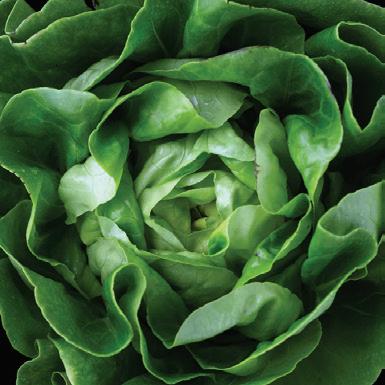











Anthrax continues to be a concern for cattle producers in North Dakota. Several more cases of anthrax in cattle have been confirmed in southwestern North Dakota.

“This is a reminder to our cattle producers that the threat of anthrax is present,” said Gerald Stokka, North Dakota State University Extension veterinarian. “It appears that during times of high rainfall or very dry conditions, the spores are uncovered and cattle are at risk of infection.”
Anthrax is a disease in cattle caused by bacteria known as Bacillus anthracis. It has a special survival mechanism called spore formation. This characteristic allows the bacteria to produce very hardy spores with a high survival rate. The spores can survive for years under the right conditions. When these spores come into contact with susceptible cattle, they can “hatch” and infect cattle, resulting in disease and death.
Often the only initial sign of anthrax infection is finding dead cattle. Cattle can die without signs of illness for a number of reasons, including lightning strikes, clostridial infections and toxicities, but anthrax always should be considered, according to Stokka. If anthrax is suspected, do not perform a necropsy. Take a blood sample and submit to the
NDSU Veterinary Diagnostic Laboratory for confirmation.
“If the diagnosis of anthrax is suspected and confirmed by your veterinarian and the NDSU Veterinary Diagnostic Laboratory, then vaccination needs to be implemented as quickly as possible,” he said.
The commercial vaccine available is a live attenuated (nondisease-causing) spore vaccine. The dose is 1 cc administered subcutaneously in the neck region. All adult cattle and calves should receive the vaccine, and treatment with antibiotics should be withheld because it may interfere with the immune response. However, when faced with an outbreak situation, administering an antibiotic and a vaccine concurrently has been effective. Consult your local veterinarian for a recommendation.
“Consider removing all cattle from the pasture where anthrax deaths are suspected because spores present can infect the remaining animals,” Stokka advised.
Also, anthrax carries a risk to humans, so take care to not disturb the carcass. The recommended method of disposal is to burn the carcass and soil on which the carcass was found after placing them in a trench dug in the immediate area of the death.
Article courtesy of NDSU Ag Communications
Farmers Restaurant Group (FRG) is thrilled to announce the upcoming expansion of Founding Farmers into Alexandria, Va., in the late summer of 2024. FRG manages NDFU’s seven restaurants.

The restaurant will be situated on the first floor of a newly developed seven-story building spanning nearly 9,200 square feet. Founding Farmers Alexandria will be open 365 days a year, with seating for 245 guests, a full bar, and an inviting patio area prime for outdoor dining.

“Our (Washington, D.C.-Maryland-Virginia) guests have been warm, welcoming, and so supportive since we started out almost 15 years ago,” said Farmers Restaurant Group Co-Owner Dan Simons. “We’re excited to be bringing Founding Farmers to Alexandria with
our farmer-owned ethos and flavors. Guests will find their favorites and be introduced to new innovations and explorations with food, beverage and design. We’ll be offering the neighborhood breakfast, lunch, dinner and weekend brunch, along with our morning First Bake grab and go program for when you need something fast. Our goal is to always meet our guests where they are.”
Founding Farmers Alexandria is the eight restaurant for Farmers Restaurant Group. With the expansion, Farmers Restaurant Group is excited to continue their farmer-owned mission of unbundling the supply chain and giving American family farmers a larger share of the food dollar, all while bringing Alexandria guests delicious, scratch-made responsibly sourced food & drink.







Despite the heat of summer, many ranchers are thinking ahead to fall and preparing to winter their cowherds. The first cutting of hay has been completed in many areas and ranchers are moving bales from the field to the lot for storage until they are fed.
This period of bale transport is a great time to set up areas for bale grazing, say North Dakota State University Extension specialists.
“Moving bales from the field straight to the area where they will be fed saves an extra step in bale movement and machinery costs,” says Zac Carlson, NDSU Extension beef cattle specialist.
“The concept of bale grazing is simple,” says James Rogers, Extension forage crops production specialist at the North Central Research Extension Center. “Place bales in a grid pattern in the area that they will be fed in. Then, install electric fence in a manner to allow access for two to three days of feeding. Continue to allow two to three days of bale feeding by leapfrogging the electric fence
across the bale grazing area.”
“Bale grazing is a good way to reduce manure handling, and add nutrients and organic material to a needed area,” shares Mary Keena, Extension livestock environmental management specialist at the Carrington Research Extension Center. “It also allows cattle to self-feed, reducing the labor of daily feeding.”
Carlson, Keena and Rogers offer several considerations to make bale grazing successful.
First, consider how many bales will be needed. This is determined by nutritional demand, the number of head and the desired length of time for bale grazing. For example, the 90-day period after weaning can be an optimal time for bale grazing because it is a time of low nutritional demand for the cow, which can be met by a fair to good quality hay. Do not forget to include bale waste. Rogers says a good estimate for bale waste is 20%, but it will vary depending on the area used for bale grazing, bale density and quality, bale access

space and animal behavior.
Forage test each hay lot, defined as similar species harvested from the same hay field within 48 hours, and allocate hay based on nutrient content and nutritional demand. You can stage bales based on quality and leave higher quality hay for cows in late gestation or early lactation.
Selection of the area to be bale grazed is important. Bale grazing can be conducted on introduced perennial pasture, hayland or crop ground, but the effects on each will differ. Bale grazing creates a concentration of nutrients and hoof action around each bale. These effects require consideration when choosing the area to bale graze. Select an area that will benefit the most from the addition of these nutrients. Perennial pasture areas with sod-forming grasses will hold up better than bunch-type grasses. Avoid areas where excess nutrients can flow into streams and ponds. Areas that can provide natural wind protection are advantageous.
If possible, use multiple locations for bale grazing over time in order to reduce nutrient concentration in one area. Use soil testing to monitor changes in soil fertility over time.
Hay bales move nutrients and seed from one location to another. If hay is contaminated with weed seed, such as foxtail barley, be mindful of areas where you do not want the weed to establish.
Place bales where all cattle can have equal bale access. Setting up bales on a 40-by-40foot grid will work well and can lead to more uniform manure distribution.

Fencing and water access are important. Electric fencing provides the flexibility to make bale grazing work. Two strands of hot wire may be required to prevent cattle from pushing into yet-to-be grazed bales. If cattle have no experience with electric fence, train them to it prior to turning onto the bale grazing area. If the ground is frozen, use the bales as an area to drive posts into for the fence. Make sure that cattle have easy and adequate access to water.
Handling bale twine and wrap can be the most challenging issue with bale grazing. If sisal twine is used, place the bale on its side, and the twine will deteriorate and not be an issue. Polypropylene and net-wraps will not deteriorate and will pose a problem if left on the bale. One strategy is to set bales on end and remove wrapping as needed, which works, but anticipate more moisture seeping into the top and bottom of the bale, which can increase spoilage.
For additional information on winter feeding strategies, view the NDSU Extension publication “Alternative Winter Feeding Strategies for Beef Cattle Management” at ndsu.ag/winterfeeding or contact your county NDSU Extension agent.
Article courtesy of NDSU Ag Communications
Wells County Farmers Union board of directors Dynella Schmitz and Jean Hauser served up food at the county’s 3rd Annual Splash Bash & Free Feed on July 23 in Fessenden. Kids and families enjoyed swimming, yard games, trivia, door prizes and speakers.





Ramsey County Farmers Union held an EPIC event at the Lake Region Ambulance Service in Devils Lake. The kids had a pizza party, received a tour, an ambulance ride and education by director Sean Reed. The kids even tried on SWAT gear!

NDFU/AIC board elections are being held for officers and even-numbered districts at the state convention Dec.15-16 in Bismarck.
Directors serve two-year terms, while the president and vice president are elected each year. Candidacy announcements should be submitted to the office of the president and be no longer than 200 words.
To be printed in the Union Farmer, announcements must be sent to Editor Chris Aarhus at caarhus@ndfu.org by Monday, Oct. 9.
The Community Ambulance of New Rockford held its annual Lifesavers in the Park event in downtown New Rockford with the help of a $500 Community Stewards grant from North Dakota Farmers Union.
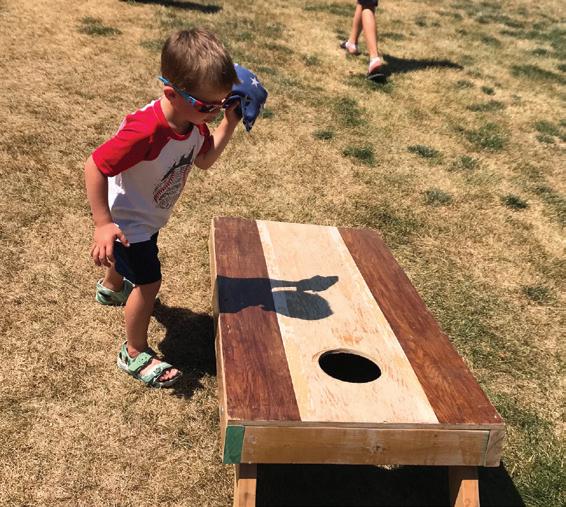



Molly Jennings of Washburn was selected as the recipient of the $2,000 Hubert K. and JoAnn Seymour scholarship, and Megan Larson of Northwood was selected as one of three recipients for the $1,500 Stanley Moore scholarship. Both scholarships are from National Farmers Union.
Ads must be submitted through the online form at www.ndfu.org. Click “Classifieds” at the very bottom of ndfu.org and fill out the online form. Ads must be re-submitted each month. No exceptions! Deadline is the 15th of every month. Limit 75 words.
MEMBERSHIP DUES MUST BE CURRENT!
VERMEER BALER 605, J Year 1987. 1000 RPM PTO, windrow gathers, hydraulic tailgate, electric tie and monitor, tires in very good condition. Always been shedded and it is in good condition. Hasn’t been used for a few years. Asking $3000 OBO. 701-391-0497, Randy Volk, Shields.
WINCH, Warn 45s winch for John Deere Gator. Basically new $275; Old fashioned post hole auger, minus the handle; Three 2800 bushel bins and one 4000 bushel t o be moved. Make an offer. 701-741-8173, John Hutchison, Northwood.
THRESHING MACHINE, 1958 International 22 inch threshing machine, always in dry shed, good condition $2,000; Horse machinery mowers and plows John Deere and International. Please call for information and prices. 701-486-3421, John Kleven, Medina.
1956 CHEVROLET 3100, small window, sbc V-8, 3 on the tree with O/D, motor runs, brakes bad from sitting, located in Northern CA. 707-4257315, Vernon Buchmann, Fairfield, Calif.
IH 806 TRACTOR, good condition, tires and engine good, $5,000 or reasonable offer. 701693-2306, Steve Vetter, Harvey.
SWATHER, JD 20 ft pull type swather modified for cliping CRP, $600 or best offer; Vermeer stump grinder. $5600 or best offer; 2 Electric motors, 1 HP 1 phase, 1750RPM asking $50 each. 509-389-9562, Wade Wipperling, New Rockford.
FARM KING AUGER, 60 ft 10 inch diameter; Ford Pickup, 1991 f150 inline 6 cylinder, 2wd. 701263-1206, Lathan Romsos, Bottineau.
1960 2 TON TRUCK. International . 8 cyl. hoist. good shape. stored inside. just tuned up. $2500 or best offer. Have photos I can text. 701-6553588, Ron Pishtek, Brocket.
1980 FORD 9000 TANDEM, twin screw grain truck, Peterson 20 ft. box, new head lift hoist, roll tarp, 80% rubber, 855 Cummins,13 speed Fuller transmission, new batteries, recent clutch replacement; 1973 IH 1700 Loadstar tag tandem truck, 19 ft. Knapheide box, new roll tarp, 392 gas engine. 701-326-4180, Ron Haugen, Aneta.
15-30 MCCORMICK TRACTOR, 1 new tire LT245-75R-Load Range E. 2- Cream Separators, 4-wheel Steel Running Gear, 1 Covered Wagon Running Gear, 12’ Kirschman Drill, 1 Horse Potato Cultivator, 4 Btm. Pony & Packer, Saddle and 2 Bridles. Email: larryn@westriv.com. 701548-8020, Larry Nagel, Shields.
BALE CARRIER, Hoff model 1100 bale carrier. $1200. OBO. 701-226-2939, Kelvin GIetzen, Glen Ullin.
JD COMBINES, 2004 JD 9660 STS Combine, Contour Master - Engine hrs -3884/Sep Hrs2706; 2001 JD 9750 Combine, PRWD, Contour Master - Engine hrs -4968/Sep Hrs – 3331. Both units in above average condition, serviced/ repaired annually (full repair list available). 701-321-5711, John Kempf, Ashley.
SPRAY COUPE, Melrose Kirshman spray coupe; 22ft x6 inch hyd auger like new; 16 ft x 5 inch hyd auger, for feed & seed, all items kept inside; Horse-cattle trailer with excellent tires; 7 ft cultivator with 3 point hitch; 6 ft disc with 3 point hitch for gardens and trees; antique gas pump. Call late evening or leave message. 701482 7749, Robert Huff, Donnybrook.
FLEX HEAD/CART, used JD 635 flex head with AWS air reel with trailer, multipoint hookups that can be converted to single point hookup, new knife sections and good poly and reel fingers, shedded, excellent condition, pictures available; 400 bu. J-Kraft grain cart, PTO drive, hydraulic fold auger and bottom gate slide over bottom auger, new roll tarp, 28L-26 single tires, good condition, all gears and drives updated. 701-952-8973, Glen Nagel, Jamestown.
TWO STEEL BINS on cones w/aeration fans; 3 triangular grain auger hoppers w/straps/chains to fasten onto grain auger; Simer water pump; Bourgault knock on cultivator sweeps; farm scale/steel wheels; used Case IH 8230 feeder chain; used 16” cultivator shovels; John Blue anhydrous nitrolator w/hyd shut off hoses; combine pickup guards/lifters; 4x8’ wooden stone boat; old front tine rototiller. 701-6299003, Doug Halden, Stanley.
DISC, 14 ft Oliver tandem disc, good diameter, hyd lift, field ready, $1,600; 5 bottom Melroe Plow and packer, $800; Heston 1170 16 ft hydroswing, new guards and sickle ready to go, $4,600; Vermeer 605 J round baler, field-ready, $2,500; New Holland 285 square baler, has its own motor, electric start, good shape, $4,800. Have a belt for belt pully machines, good shape. $15. Can deliver any items. 701-400-5742, Gerald Miller, Mandan.
TRUCK SCALE, Thurman 30 Ton Truck Scale. 10’ x 30’. Very good condition, currently balance beam, easily converted to digital load cell. 701549-3727, Lyle Carpenter, Walhalla.
HAY MOISTURE TESTER, JD baler mounted moister tester, new, Cab Mounted Display For On The Go Moisture Tester. $300. 701-5973525, Scott Nelson, Solen.
WANTED
103 MELROE SPRAY COUPE, in running condition. 701-597-3695, Darryl Bures, Flasher.
CARTED HAY RAKE, 5 or 6 wheel per side. 701658-9060, Davin Wirrenga, Adrian.
TRACTORS; IH 706, 806, 1206, 1256, 1456, 1066, 1466, 1566, and others; JD 4520, 4620, 5010, 5020, 6030, others; MM 950s on up; Olivers 1964 on up; AC 200, 210, 220, D-21, others; will buy running or not. 701-628-2130, Jerry Lumley, Stanley.
SNOW BLOWER, front mount for JD 420/430 garden tractor. 701-640-8843, Merle Rubish, Wahpeton.
ROTARY MOWER, 3 pt, cat 2. 701-226-2939, Kelvin GIetzen, Glen Ullin.
DRILLS/RAKES, Morris M-10 grain drills and Vicon 6-wheel hay rakes. 701-226-4055, Lloyd Giese, Steele.
HONDA ATV, Fortrax Foreman Rubicon, power steering, works good, black in color, always shedded. 701-754-4157, Alvin Mertz, Napoleon.
STOCK TANK, 300 gal. Rubbermaid stock tank, 125.00: Barn doors & tracks, various sizes, make offer; Assorted size windows from our house, make offer; Large homemade JD mailbox, can be used for mail or as yard decor, best offer; Can e-mail pictures if you’re interested. 701-8302436, Gary G. Hoffman, Ashley.
WELDER, Hobart wire feed welder, model handler 187 and h100s2-10 gun, 230 volt wire feed welder, 25-185 amp output, made in USA, volts 230 amperes, 20.5 kw3.88 phase-1 hertz 60 with welding cart. 701-448-2475, Paul Weinberger, Turtle Lake.
CAB KIT, Toro snowblower cab kit, $35. Powerhorse 2500W portable generator, new never used, $325. 701-297-9634, Larry Lampl, West Fargo.
MOBILE HOME, 1965 Wolverine 20 ft x 50 ft double wide mobile home. It’s an old home but livable. This would be an excellent starter home, cabin, or work space. Can be easily moved in two halves or moved as one unit. Call for details. 701-658-9060, Davin Wirrenga, Adrian.
PVC PIPE, 6 inch, schedule 35, gasketed or glued. 701-351-6040, Rick Schwab, Devils Lake.
SIGNS/ CAST IRON BASES: COOP oval shape, Our Own Hardware, Benjamin Moore Paint sign. Coke and Pennzoil cast iron bases used for sidewalk signs. Trades welcomed. 701-2205746, Val Ganje, Bismarck.
HIGH STANDARD VICTOR, Caliber .22 long rifle, made in 1976, Hamden Conn. 4 1/2 inch barrel, ventilated rib with adjustable sights, front weight checkered walnut grips with thumb rest. 10 shot magazine, gold trigger 98%+ condition $975. 701-351-3305, Arne Berg, Devils Lake.
2013 CHEVY IMPALA LTZ. Great school car. Loaded. 39,000 miles. Always garaged. Must see. New tires, Heated leather seats, sun roof, fold down rear seat. Excellent shape. $14,500. Call or text. 701-269-0663, Dean Ulmer, Jamestown.
Sept. 19, 2023
Grand Forks County Farmers Union annual meeting • AgCountry Farm Credit Services in Grand Forks • 6 p.m.
Oct. 15, 2023
Sargent County Farmers Union annual convention • Rutland Senior Center • 4 p.m.
Nov. 5, 2023
Barnes County Farmers Union annual convention • Pizza Corner • 6 p.m.
Nov. 9, 2023
Mercer County Farmers Union annual convention • Beulah Civic Center • 5:30 p.m.
Nov. 14, 2023
Walsh County Farmers Union annual convention • Alexander House in Park River • 6 p.m.
Nov. 19, 2023

Richland County Farmers Union annual convention • Pizza Ranch in Wahpeton • 4:30 p.m.
CARAVAN, 2013 Dodge Grand Caravan, 137k miles, new brakes, nice shape, $8K obo. 701597-3525, Scott Nelson, Solen.
WANTED
GOLF CART ELECTRIC; Older .22 pump or single shot 22; .357 pistol; 1966 Chev pickup; Manual typewriter. 701-628-2130, Jerry Lumley, Stanley.
OLD STUFF, Indian Head old road signs, old retired HP door sign, ND License plates, ND picked arrowheads, and ND small town metal trade tokens. Advertising signs, Gas pumps, Thermometers, Clocks, Crocks, and Custard glass. I will travel and pay cash. 701-220-5746, Val Ganje, Bismarck.
ALL CLASSIFIEDS MUST BE SUBMITTED ONLINE AT NDFU.ORG/CLASSIFIEDS Classifieds by mail, fax, phone or email will not be accepted.

